Speed Up Your Calculations: Vedic Maths Multiplication
Vedic mathematics is a system of mental calculation developed in ancient India based on 16 sutras, or aphorisms, that describe methods for solving mathematical problems. It is said to have been rediscovered by Sri Bharati Krsna Tirthaji, who published a book on the subject in the early 20th century. The techniques of Vedic mathematics are based on the Vedas, the ancient Hindu scriptures. Vedic mathematics can be used to teach mathematical concepts in a more intuitive and visual way. It is an effective method for speeding up your calculations as well because many of the steps in Vedic Mathematics are completed mentally.
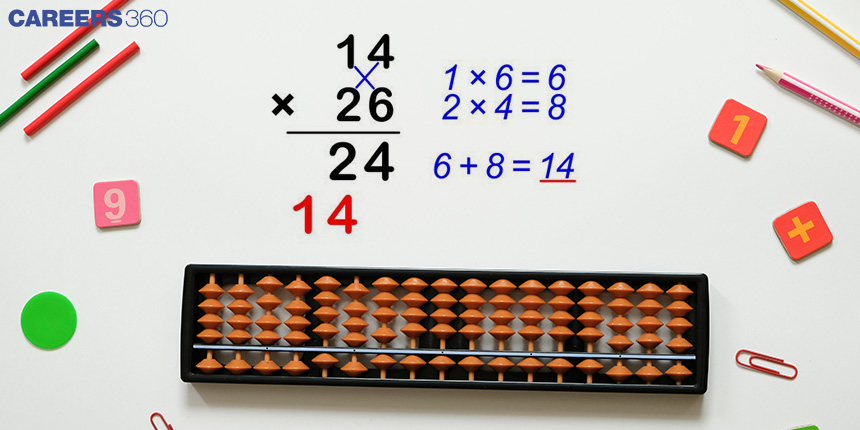
In traditional mathematics, multiplication of two or more digits can take quite some time. Vedic mathematics can help save time. The two most important rules of vedic mathematics for multiplication are discussed below. Understand them and start applying them in your day-to-day calculations, and you will observe a significant improvement in your speed.
Base Method For Multiplication
This method is useful for multiplying numbers that are close to 10, 100, 1,000, and so on. For example the multiplication of 96 and 97 or 993 and 1004, can be done instantaneously using the base method. The number 96 and 97 are close to 100, hence we will say: “The base of 96 and 97 is 100”. Similarly, the base of 993 and 1004 is 1000. Now, let’s understand how this process works.
Example 1: Multiplication of 97 and 98
Explanation:


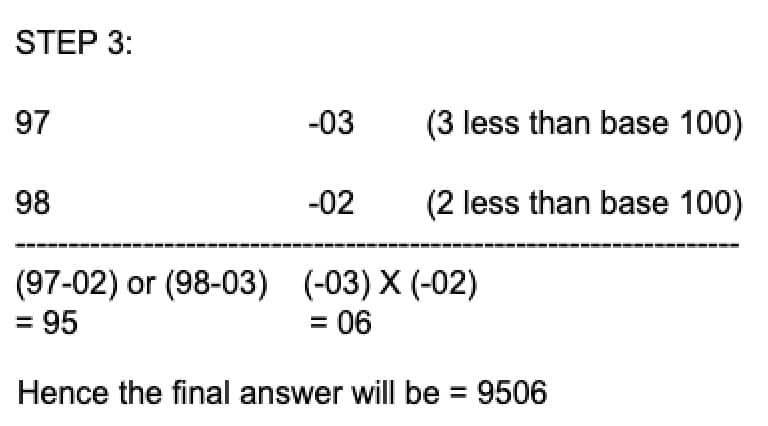
Example 2: Multiplication of 96 and 103
Explanation:

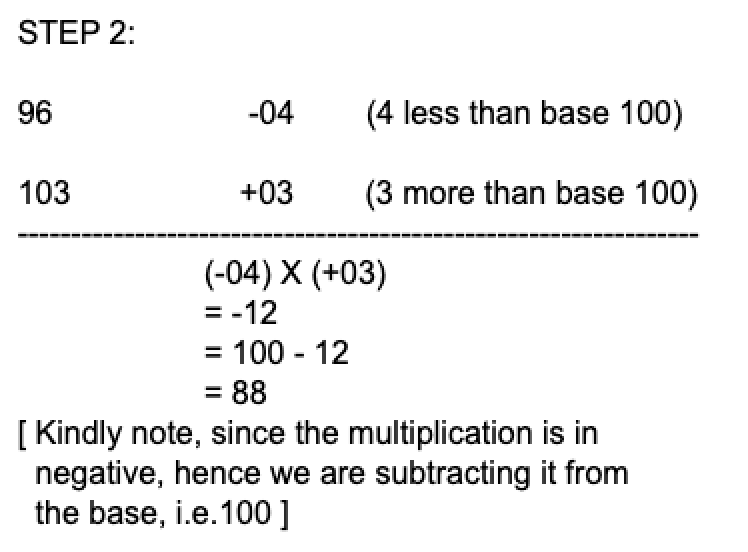

Example 3: Multiplication of 988 and 1009.
Explanation:
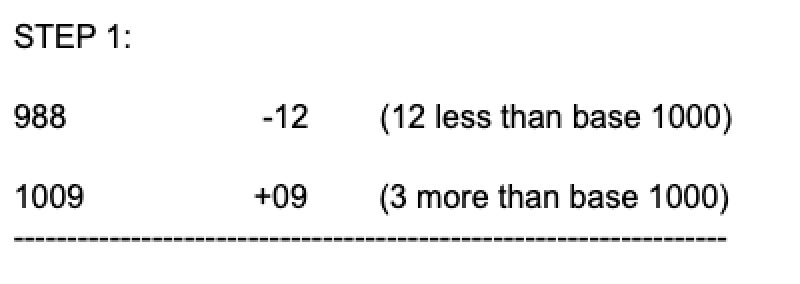
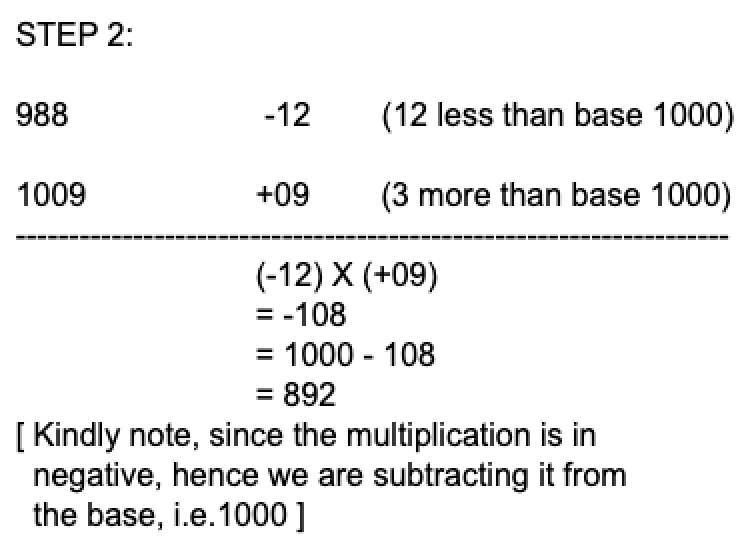
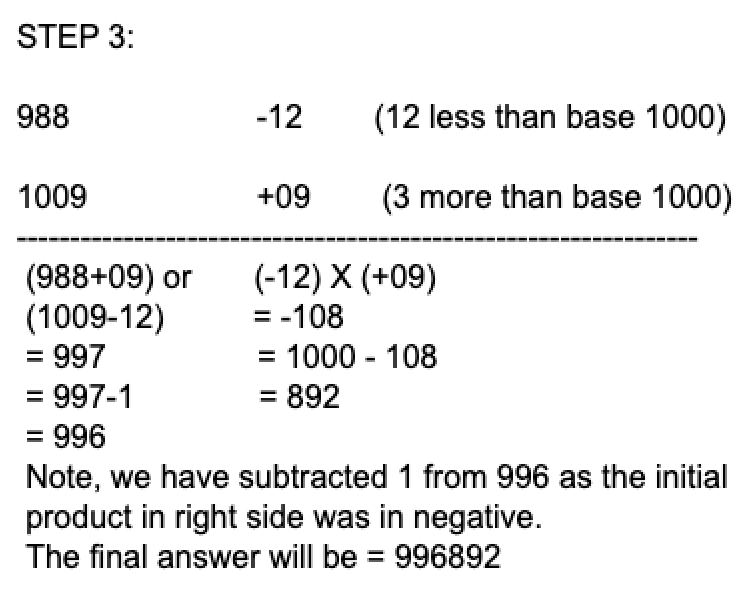
All multiplication involving the numbers near the base can be done in this fashion. Also, in the above example, all the steps are mentioned in detail, for the sake of clarity of concept. Ideally, these calculations should be done mentally and involve minimal writing.
Also check - Improve Your Speed And Accuracy With The Fraction Percentage Table
Criss-Cross Method Of Multiplication
The “criss-cross method” is a very useful technique for multiplying two, three and four-digit numbers as it is faster than the traditional method. The following examples show how it works.
Example 1: Multiplication of 23 and 19
Explanation:
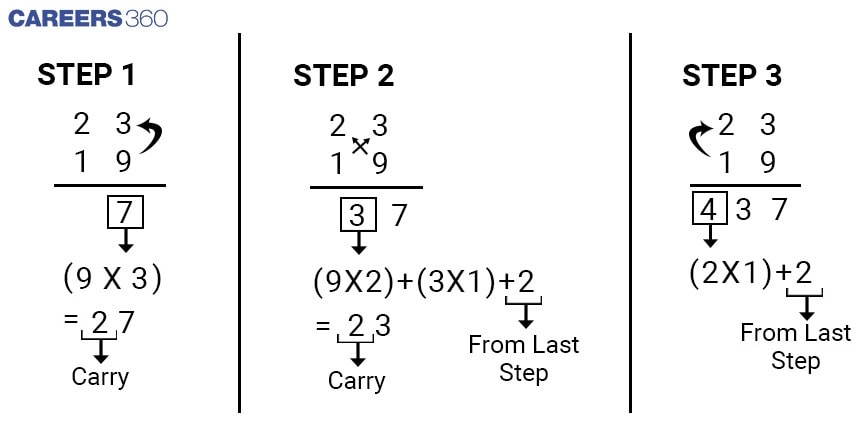
Example 2: Multiplication of 358 and 496
Explanation:
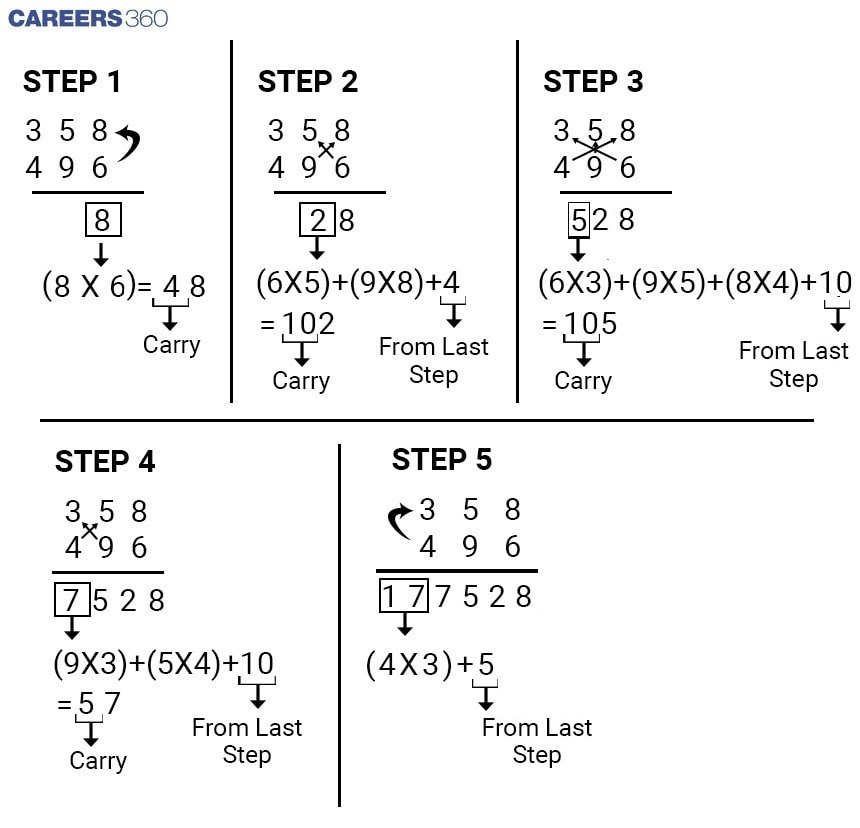
Given above are two examples of multiplication using the criss-cross method and it can be applied on other numbers as well. This method can also be used for multiplying three-digit with two-digit numbers. In that case, all you need to do is to imagine a zero at the hundredth place of the two-digit number.
For example, if you want to multiply 231 by 37 then think of 37 as “037” and apply the same method described in Example 2. Again,all the steps given above should be covered mentally. If you have strong command over the multiplication tables, it will not be difficult for you.
Using vedic maths techniques to perform multiplication can be a useful way to enhance calculation speed, as it allows you to perform multiplications more efficiently than the traditional methods. Some of the techniques use shortcuts to simplify multiplication calculations. With practice, you can become proficient at using vedic maths techniques and be able to solve complex multiplication problems quickly and accurately.
It is important to note, however, that like any other maths technique, mastering vedic maths requires practice and persistence. So, if you want to improve your multiplication skills, it is important to commit to regular practice and to seek out
Also check - How Transgenic Animals Can Help Human Kind
Applications for Admissions are open.
As per latest syllabus. Physics formulas, equations, & laws of class 11 & 12th chapters
JEE Main Important Chemistry formulas
Get nowAs per latest syllabus. Chemistry formulas, equations, & laws of class 11 & 12th chapters
JEE Main high scoring chapters and topics
Get nowAs per latest 2024 syllabus. Study 40% syllabus and score upto 100% marks in JEE
JEE Main Important Mathematics Formulas
Get nowAs per latest syllabus. Maths formulas, equations, & theorems of class 11 & 12th chapters
